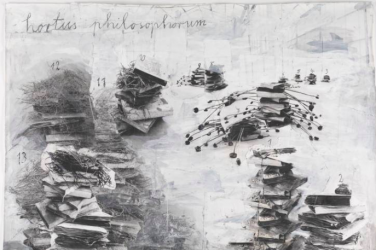Across the world people keep taking to the streets, demanding more from regional, national and international representatives and institutions. What is it that makes people take to the streets? And why do people use it as an effective tool for advocacy? Isabel Flanagan investigates.
In recent months, across the world, we have seen people stand up and march. Some of these marches have obvious nationalist sentiment, like the 2017 march in Poland where 60,000 people chanted “Pure Poland!” on Independence Day.
Other marches have concentrated on more global issues, like the student global warming marches. Then there are the new record-breaking marches, like the Brexit March in London on the 23rd March 2019, where it is estimated over a million people came out and participated. Some marches have even gone as far to question standards of morality in political discourse and policies, as was the case in the March 2019 anti-racism march in Milan.
In our age of political apathy, disenfranchisement, weakening of party allegiance and (in some cases) outright anger towards established political systems – why are people marching? What is it about the act of placing one-foot in front of the other, in a crowd, cheering chants and waving placards which people think will initiate change? Is what is happening today any different to traditional forms of marching?
The act of marching is woven into modern understandings of democratic logic. Thinking back to the origins of the French and American revolutions, they both started with protests and marches against the established government systems. These revolutions sought to place the power of governance at the feet of common man, who collectively are known as the people. If they so wished, it was up to the people to change political discourse and systems.

Marching is one form of the people’s expression and political participation. They are a way of forming and representing political solidarities, making new links between individuals and wider collectives. People go to the marches with their own motives, ideas and backgrounds.
Yet, the act of moving together in a crowd, chanting as one and waving signs builds bonds. This creates a common ground from which the people emerge in support of a cause. By marching together there becomes an outlet for the people’s voice.
Marching is typically seen as an outlet for a critical voice of the people, as they are a way of evoking political change. Thinking back to some of the greater democratic reforms in the world: Gandhi led the famous Salt Marches to challenge colonial rule of India, Martin Luther King used marches to fight for civil rights and it was the mass movement of people in 1989 which physically tore down the Berlin wall and collapsed the communist system.
In all these marches there was an expression of a common goal founded between people, but they were also seeking to challenge the political status quo. Indeed, marches are often categorised as a form of ‘civil resistance’ for they use lawful and non-violent methods to change political systems, policies or laws.
Yet, it should be highlighted that marching is not the traditional measure of political expression in democracies. Voting is typically seen as the reflection of democracy.
The fact that so many people are turning to the streets as a form of public, group political participation is also a rejection of voting as the more traditional and recognised form of political participation.
That is, in a global comparative perspective, if a country holds regular free and fair elections, they are considered democratic. While other forms of political participation, like marching or the free press, are still considered important it is voting which is an indicator of democracy. The fact that our historical moment is once again filled with marches is one demonstration that people are feeling unheard and seeking new forms of expression.
Since the ‘70s there has been a steady decline in election participation in Europe. It has led to academic and experts alike to talk about new forms of political participation. The fact that so many people are turning to the streets as a form of public, group political participation is also a rejection of voting as the more traditional and recognised form of political participation.
The content and structure of marches are also shifting as they are reflecting more transnational and international forms of political engagement. Looking at the recent global warming marches, and even the Women’s march after Trump’s election into US office, we see that marches now have the capability to move across the world.

This phenomenon was first noted during the 2010 Arab Spring, where the use of social media allowed for the coordination and cross-communication from one protest movement in one country to another. Marches no longer target specific national policies and laws but are about global issues, which affect citizens across all national borders and states, such as global warming and feminism.
Even the marches which hold nationalistic tendencies align with this new global element. Take the recent Brexit marches in London or Farage’s Sunderland march as examples. Both are about a national issue, Brexit.
However, Brexit is also about Britain’s relationship with its European neighbours and (for some) the dream of making a ‘Global Britain’ once again. On the 21st of March, there was even a pro-Brexit march in Brussels in front of the European Council to try and influence the EU’s Brexit policy. Even for this nationalistic cause we are seeing that this global approach is being used and global phenomena, like regionalism and the provenance of international institutions, are being cited.
Citizens across the world are more aware of global issues and are demonstrating new forms of global solidarity.
Citizens across the world are more aware of global issues and are demonstrating new forms of global solidarity. Looking at the women’s march again it was not just a defence of feminism, but also an act of mutual support to women in the USA and those voters who were against the Trump administration. The images shared after the Charlie Hebdo shootings in 2015 also served a similar purpose, where the aim was to show support for the victims of the shooting. New bonds of solidarity are being formed between citizens across the world.
The issues which have been advocated for are no longer directed towards specific state policies and laws, but touch on much abstract notions and idealistic goals. This broadness may be why they are so translatable to so many different cultural audiences, but what is lost is perhaps the specific goal and plan to make these ideals into tangible political and policy focused realities.
For example, the global warming march did have a policy goal but who was the march directed to? Local politicians to introduce new bills and laws? National leaders, who will in turn, place pressure on other national leaders and create new norms? International institutions which will pass new policies? In Belgium the Green party have tabled a new progressive climate bill, which is currently being discussed, in reaction to the marches – but will other national governments and parties follow suit?
The effectiveness of the idealised, globalised marches is a space to watch. While these new marches have gained media attention it remains uncertain if they will be able to successfully initiate tangible change.
We have seen globalisation affect systems of international governance, trade and communication, but we are currently seeing how it is affecting democratic participation and political expression. Marching is a powerful way of shaping our global democratic culture. Using traditional methods of democratic participation, new forms of the people are emerging across the world and demanding more from their governmental institutions. Who exactly the people are communicating to and how effective their messages are is unclear. Yet, new solidarities and forms of expression are arising.
The people from all corners of the world are finding new common causes, coming together to express their views and demanding new types of political change. We are living in a unique global marching moment.
Cover image: Alex Radelich (Unsplash), Licence: PD








